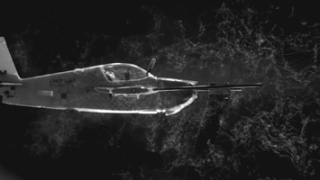Oct 28 2014
Researchers from RMIT’s Unmanned Aircraft Systems Research Team have lodged a provisional patent on an innovative system that mimics the way feathers help birds detect disturbances in the air.
 Researchers have lodged a provisional patent on the anti-turbulence system.
Researchers have lodged a provisional patent on the anti-turbulence system.
Research supervisor Professor Simon Watkins said flight testing on a micro plane showed the system significantly reduced the effects of turbulence.
"By sensing gusts and disturbances in air flow through their feathers, birds are able to fly gracefully rather than bouncing around in turbulent air," he said.
"The system we have developed replicates this natural technology, with the aim of enabling planes to fly smoothly through even severe turbulence - just like birds."
The system is based on the concept of phase-advanced sensing, in which flow disturbance is sensed before it results in aircraft movement. This can be achieved by early sensing of the pressures from gust effects on the leading parts of the wing or by measuring the gusts ahead of the wing.
Professor Watkins said the system had great potential for all sizes of aircraft and could not only reduce the effects of turbulence on passengers but also reduce loads on plane wings, leading to lower fatigue and hence longer life.
"While we need to explore new sensor arrangements to apply this technology to larger and faster aircraft, we have proven the idea on the most challenging problem of keeping small, lightweight planes steady - since these are the ones that get bounced around the most," he said.
The patent submission for a turbulence mitigation system for aircraft represents the successful outcome of PhD research by Abdulghani Mohamed, supervised by Professor Watkins and Dr Reece Clothier in RMIT's School of Aerospace, Mechanical and Manufacturing Engineering.
Mr Mohamed's theoretical contributions in the field of turbulence and its effects on flight vehicles, aided the development of this invention.
Anti-Turbulence System Inspired By Birds | RMIT University
Findings from the research, funded through an Australian Postgraduate Award, have been published in prestigious aerospace journal, Progress in Aerospace Sciences.
The flight test results of the technology have been submitted for publication in academic journals.